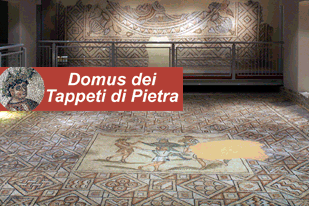Piazza del Popolo in Ravenna.









Piazza del Popolo in Ravenna. Hotel near Piazza del Popolo.
Photo: 1)the Piazza del Popolo towards the town hall, 2)the Piazza del Popolo from the side of Palazzo Rasponi dal Sale and the clock, 3)the arches beneath the town hall, 4)the statue of S.Vitale, 5)the statue of S.Apollinare, 6)the frescoes of the underpass of the town hall building.
It was here that on 24th February 1441, to the shouts of "Long live San Marco!", that the Republic of Venice was proclaimed dominant and the protector of the town of Ravenna.
This square is a Venetian creation and represents the focus of the interventions of urban renewal implemented under the domination of the Serenissima.
Its dimensions, that remained unchanged, were laid down in the period 1470-80, through the expansion of what was a simple extension along the banks of the Padenna, the canal which flowed where the crenellated palace once was.
This was a way of giving greater importance and scope for what had become the politically dynamic centre of the city at the end of the 1200’s, during which time the communal administrative functions began to carried out in the residences of the Da Polenta, to be found here.
The old communal building was rebuilt on the arrival of the first Venetian Podestà, Vittore Delfino, who was subsequently honoured with emblems, a stone balcony and terracotta bands in the arches.
In order to delimit the square towards the Padenna, in the same way as in Venice with Piazzetta San Marco towards the lagoon, two columns were erected in 1483. On the one nearest the palazzo, a lion of San Marco; was positioned and the statue of the patron saint, Sant'Apollinare on the other.
The opposite side of the piazza was scenically concluded with the facades of the church of San Marco and of the church of San Sebastiano, which are no longer exist today, and on this last the first clock was positioned. In this way the square became the area that reflected and symbolized the presence of the dominant party and its power.
As from 1509, when pope Julius II took possession of the town, following the defeat of the Venetians at the Ghiara d'Adda, the emblem of the Serenissima disappeared from the square: the lion on the column was replaced by the patron saint, and beside him appeared the statue of San Vitale.
The town hall building was expanded in the new area erected on the land made available as the result of the clearing of the Padenna (which had already been initiated by the Venetian authorities).
It was embellished with crenellations in the XIX century, thereby taking on a primary role amongst the buildings that delimit the square: the imposing one of the apostolic legate, which still remains the government building ; and the one on the front erected with 18th century grace by the Rasponi dal Sale, one of the branches of the most powerful family of the aristocratic oligarchy of the papal era.
The square known as the Piazza del Comune o Piazza Maggiore in modern day documents, was named after Vittorio Emanuele II after the proclamation of the Kingdom of Italy. It assumed its current day name after the institutional referendum of 1946, when in Ravenna over 88% of the voters, the highest percentage in Italy showed preference for a republic rather than a monarchy.
Prof. Gianni Morelli The pleasure of fine accommodation in the centre of Ravenna: we recommend the Fabbri hotels for a pleasant stay as follows:
The Centrale Byron Hotel, 3-star hotel in the centre of Ravenna, close to the main momuments;
The Bisanzio Hotel, 4-star hotel in the centre of Ravenna, close to the main momuments;
Once you have reached the hotel and parked your car, forget it and walk everywhere, because everything is within walking distance.
© reserved copyright





